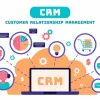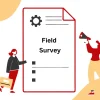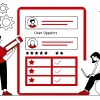
Best Practices for Handling Feedback in Real-Time
Handling feedback in real-time effectively is a cornerstone of improving customer satisfaction, streamlining processes, and fostering collaboration. In today’s fast-paced world, real-time feedback has become essential for businesses to respond promptly and appropriately, enabling swift action and better outcomes.
This article outlines best practices for managing feedback in real-time, focusing on strategies that can enhance customer relationships, boost team productivity, and drive business growth
Why Real-Time Feedback Matters?
Real-time feedback refers to the immediate collection and processing of opinions, suggestions, or critiques, enabling faster resolution and continuous improvement. Unlike delayed reviews, this approach allows businesses to address issues as they arise.
Key Benefits of Real-Time Feedback
Real-time feedback offers businesses immediate insights into customer needs and experiences, enabling quick responses and proactive improvements. Here are the primary benefits of real-time feedback and how they can positively impact your organization:
1. Prompt Problem-Solving and Reduced Escalations
Real-time feedback allows you to address issues as they arise, minimizing the risk of escalation. For example, identifying and resolving a customer’s dissatisfaction during a transaction can prevent complaints from spreading to public platforms like social media or review sites.
Prompt action not only resolves the immediate issue but also demonstrates your commitment to customer satisfaction, helping to build trust and loyalty.
2. Enhanced Customer Experiences with Personalized Solutions
Responding to real-time feedback enables businesses to provide tailored solutions to customers. When customers feel heard and see their concerns addressed in a way that meets their unique needs, they are more likely to remain loyal.
For instance, if a customer reports a problem with a product, offering a replacement or refund immediately can transform a potentially negative experience into a positive one. This personalization enhances the overall customer experience and encourages repeat business.
3. Increased Team Efficiency Through Immediate Course Corrections
Real-time feedback provides teams with actionable insights that can lead to immediate course corrections. For example, if a recurring issue is flagged during a service interaction, teams can adjust processes or strategies on the spot, preventing further problems.
This agility not only boosts operational efficiency but also fosters a culture of responsiveness and continuous improvement within the organization.
4. Strengthened Customer Relationships and Insights
By actively engaging with real-time feedback, businesses strengthen their relationships with customers. It demonstrates that the company values their input and is committed to delivering exceptional service.
Additionally, analyzing this feedback provides deeper insights into customer preferences and pain points, guiding long-term improvements and innovation
Setting Up Systems for Effective Real-Time Feedback Tracking
To efficiently handle real-time customer feedback, businesses must have robust systems in place. Feedback tracking systems ensure that no valuable insights are missed.
1. Use Feedback Tools
Invest in tools like survey platforms, chatbots, or CRMs tailored for real-time tracking. For example:
- Live chat tools for instant customer interaction.
- Automated surveys are sent immediately after service completion.
2. Centralize Feedback Collection
A centralized dashboard for all feedback ensures organized responses. Many customer feedback services integrate with business systems to provide a unified view.
3. Implement Real-Time Alerts
Set up alerts for critical feedback through apps or email. This ensures immediate attention to urgent issues, demonstrating responsiveness.
Training Teams for Real-Time Engagement
Employees play a critical role in managing feedback in real time. Proper training ensures they are prepared to respond effectively.
1. Active Listening Skills
Teach teams to focus on what the customer is saying without making assumptions. Encourage empathetic responses to create a positive impression.
2. Rapid Response Protocols
Develop protocols for responding to real-time reviews. This can include:
- Acknowledging the feedback immediately.
- Following up with actionable solutions within a defined time frame.
3. Empowerment Through Decision-Making
Equip employees with the authority to make decisions within set boundaries. This reduces delays and increases customer satisfaction.
Leveraging Technology for Real-Time Feedback
Technology is the backbone of real-time interaction. Here are some tools and techniques to optimize the process:
1. AI and Chatbots
AI-powered chatbots can handle repetitive queries instantly, leaving complex concerns for human agents. This ensures no feedback is overlooked.
2. Sentiment Analysis Tools
Use AI-driven sentiment analysis to gauge the tone of feedback. This helps prioritize responses to negative feedback, ensuring timely resolutions.
3. Real-Time Analytics
Real-time analytics tools, such as Google Analytics, provide actionable insights into customer behavior and preferences.
Best Practices for Responding to Feedback
1. Stay Transparent
Transparency is essential for building trust with your customers. Communicate how their feedback will be utilized to enhance products, services, or processes.
For example, share specific steps being taken or changes being implemented as a result of their input. When customers see that their voices are genuinely heard and valued, they are more likely to continue engaging with your brand and offering constructive suggestions in the future.
2. Personalize Responses
Generic replies can make customers feel undervalued. Instead, craft personalized responses by addressing the customer by name and referring directly to their specific feedback or concerns.
For example, if a customer highlights an issue with a product feature, acknowledge the particular feature and describe how you plan to resolve it. This personal touch shows attentiveness and helps build a stronger connection with your audience.
3. Close the Feedback Loop
Acknowledging feedback is only the first step—closing the loop is equally important. After addressing a customer’s issue or implementing their suggestion, follow up to let them know the outcome. This could involve sending a message thanking them for their input and detailing the improvements made.
Closing the loop reassures customers that their feedback has a tangible impact, fostering loyalty and encouraging future interactions.
4. Learn from Trends
Feedback from individual customers is valuable, but identifying trends across multiple responses can provide deeper insights. Regularly analyze feedback for recurring themes, common pain points, or frequent suggestions.
Use this data to prioritize improvements or innovations that address widespread issues, ensuring your organization evolves to meet customer needs effectively. By being proactive in identifying patterns, you can stay ahead of potential challenges and enhance the overall customer experience.
The Role of Real-Time Reviews in Building Reputation
Real-time reviews on platforms like Google, Yelp, or social media have a profound impact on a brand’s reputation. They influence how potential customers perceive your business and play a key role in shaping customer trust and loyalty. A proactive and strategic approach to managing these reviews can turn them into a valuable asset for your brand.
1. Encourage Positive Reviews
Satisfied customers are often willing to share their experiences if asked politely. Make it easy for them to leave positive reviews by providing direct links or QR codes to review platforms. Train your team to identify happy customers and encourage them to share their feedback online.
Balancing the occasional negative feedback with genuine positive reviews enhances your brand’s online rating and creates a more accurate representation of your customer experience.
2. Address Negative Reviews Promptly
Negative reviews, if mishandled, can damage your reputation. Respond to them quickly and professionally to demonstrate your commitment to customer satisfaction. Acknowledge the reviewer’s concerns, apologize sincerely for their experience, and outline a clear plan to resolve the issue.
Avoid being defensive or argumentative, as this can escalate the situation. Instead, focus on turning a dissatisfied customer into a loyal one by offering meaningful solutions.
3. Showcase Improvements Based on Feedback
When you make changes based on customer feedback, highlight these improvements in your communications. Share success stories or updates on review platforms, social media, or your website to show that you value customer input and are committed to continuous improvement.
For example, if reviews pointed out a recurring issue with product delivery, inform your audience about the steps you’ve taken to improve logistics. Transparency and follow-through build credibility and strengthen trust.
4. Monitor and Leverage Trends in Reviews
Beyond individual reviews, real-time feedback can reveal broader trends about customer preferences and pain points. Use analytical tools to monitor recurring themes and address them strategically.
This proactive approach not only helps resolve underlying issues but also positions your brand as one that listens to its audience and adapts accordingly.
Measuring Success in Real-Time Feedback Management
To ensure your feedback management strategy is effective, it’s important to track key performance indicators (KPIs) that reflect how well your team is addressing and leveraging customer feedback. Here are some critical metrics to measure and improve upon:
1. Response Time: How Quickly Feedback Is Acknowledged
A fast response time is a cornerstone of effective feedback management. Measure how quickly your team acknowledges customer feedback, whether it’s a query, complaint, or compliment. Quick acknowledgment shows customers that their input is valued and that your team is attentive.
Tools like automated response systems or dedicated support teams can help reduce response times significantly.
Looking for more on customer feedback management? Click on this link to get better knowledge.
2. Resolution Time: The Duration Taken to Resolve Issues
Resolution time measures how long it takes to address and resolve customer concerns after they’re raised. The shorter the resolution time, the more efficient your team is in handling feedback.
Track this metric to identify bottlenecks in your processes and ensure that issues are resolved promptly, leading to better customer experiences and increased trust.
3. Customer Satisfaction Scores (CSAT): Gauging Satisfaction After Interactions
CSAT surveys, conducted immediately after resolving an issue or interacting with a customer, provide direct insights into how satisfied customers are with your service.
High CSAT scores indicate that your feedback management strategy is effective, while lower scores may highlight areas needing improvement. Use this data to refine your processes and enhance overall customer satisfaction.
4. Feedback Volume and Trends Over Time
Monitor the volume of feedback received and identify trends over time. A surge in negative feedback might signal underlying issues that need immediate attention, while consistent positive feedback reflects successful service and customer satisfaction.
Analyzing trends helps in proactively addressing recurring issues and recognizing areas for innovation.
5. Review Metrics Regularly and Adjust Your Strategy
To maintain high standards in feedback management, regularly review your response time, resolution time, CSAT scores, and trends. Use these insights to fine-tune your approach, train your team, and implement tools or strategies that enhance efficiency.
Regular assessments ensure your organization remains agile, responsive, and focused on delivering exceptional customer experiences, and customer service.
Conclusion
Effectively managing real-time feedback requires a combination of tools, training, and proactive strategies. By implementing these best practices, businesses can foster stronger relationships, enhance customer satisfaction, and gain a competitive edge.
Frequently Asked Questions? (FAQs)
What is real-time feedback?
Real-time feedback involves collecting and addressing feedback immediately after an interaction or event, ensuring timely and effective responses.
Why is feedback tracking important?
Feedback tracking ensures that no customer input is missed. It helps businesses address concerns promptly and identify trends for long-term improvement.
What are customer feedback services?
Customer feedback services are platforms or tools that help businesses collect, organize, and analyze feedback from customers, such as survey tools and review management systems.
How can real-time reviews improve my business?
Real-time reviews allow businesses to monitor and address customer concerns quickly, improving satisfaction and building trust.
Enhance Patient Care and NABH Compliance with LazyMonkey
LazyMonkey is your all-in-one solution for improving patient care, retaining more patients, and meeting NABH standards. Our powerful QR-based feedback tool enables you to capture real-time insights from patient feedback, discharge surveys, staff and doctor evaluations, and clinical research, while also streamlining inter-departmental communication.
Transform your healthcare facility today - reach out to us at [email protected], or request a demo here!
Elevate Your Restaurant Experience with LazyMonkey
LazyMonkey’s QR-based feedback system helps you gather real-time insights from customers, track satisfaction levels, and enhance the dining experience. Get instant feedback on your menu, service, and ambience, and make data-driven improvements to boost repeat customers and reviews.
Improve your restaurant today – reach out to us at [email protected], or request a demo here!
Empower Student Engagement and Campus Improvement with LazyMonkey
LazyMonkey offers a seamless way to gather student feedback, track satisfaction, and enhance campus life. From course evaluations to dorm feedback, our QR-based solution makes it easy to capture valuable insights and improve student retention.
Upgrade your university experience – contact us at [email protected], or request a demo here!
Streamline Feedback and Drive Performance Across Your Enterprise/Franchise with LazyMonkey
Whether you manage one or multiple locations, LazyMonkey’s QR-based feedback system helps you gather real-time employee and customer feedback. Improve operational efficiency, track satisfaction, and make data-driven decisions to enhance brand consistency and growth.
Transform your franchise today – reach out to us at [email protected], or request a demo here!
Enhance Customer Satisfaction and Service Standards in Banking with LazyMonkey
LazyMonkey empowers banks to capture real-time feedback from clients across branches. Improve customer experience, assess service quality, and ensure regulatory compliance with our QR-based solution, helping you retain clients and meet banking standards.
Elevate your bank’s customer care – contact us at [email protected], or request a demo here!
Boost Customer Engagement and Mall Satisfaction with LazyMonkey
LazyMonkey’s QR-based feedback tool enables you to collect feedback from shoppers, track satisfaction, and enhance the mall experience. Gather insights on store services, cleanliness, and entertainment to create an unmatched customer journey.














